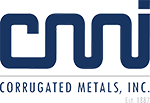Logistics is a crucial part of business for every manufacturer. With fuel and machinery market price increases, consumer demand for fast delivery times, and many other budgetary pressures, logistics can contribute to a large percentage of business costs.
Taking action to minimize expense is a primary focus for business operations. Management and logistics play a big role in the supply chain, and with the right strategies in place, companies can successfully improve efficiencies resulting in lower operating costs.
Here are the key strategies for reducing logistics costs.
1. Maintain visibility of your supply chain
Overseeing visibility and control of your supply chain can reduce unexpected costs and improve planning through better management. Disruptions in the logistics process are unpredictable, but with proper supply chain visibility, managers have better insights into mitigating potential issues, contributing to cost control.
Steps to increase visibility include:
- Identify pain points: Do some digging to determine the most pressing issues and processes that would benefit the most from increased visibility.
- Invest in technology: Look at your pain points, unique needs, and goals and choose a sophisticated system that will support your supply chain data management needs and increase visibility through dashboards with real-time data.
- Implement standardized internal processes: Establish standardized processes for all critical elements in the supply chain – material procurement, warehousing, shipment, packaging, and delivery – to allow you to take corrective measures when needed without having to micro-manage supply chain operations.
- Keep communication clear: Precise communication between your suppliers, distributors, internal teams, delivery agents, and customers offers greater visibility in the organization, improves transparency with customers, and is the key to logistics success.
2. Ensure quality project management
The planning of operations such as project timeline, production schedule, shipping routes and transit times is crucial for any company. Under-managed projects lead to last-minute decisions which create delays and missed deadlines, damaging your company image and creating unwanted costs.
A quality project management strategy should start by determining project deliverables and deadlines ahead of time, so all team members know what is expected from them to complete their job. Be sure to set realistic deliverables to avoid overpromising and underdelivering. And take advantage of project management software tools that allow you to manage tasks, track progress, and streamline communication to help you deliver projects as effectively as possible.
3. Optimizing transportation with technology
Tracking shipments from dispatch to arrival allows you to catch problem areas in your transportation logistics. A transportation management software focuses on the planning, optimization, and execution of the different modes of transportation, allowing your company to increase efficiency and reliability.
With a helpful TMS, you can implement major strategic changes to provide visibility, reduce costs, and have more time to focus on optimizing the warehouse space – or working on other company initiatives.
Components include:
- Route planning and optimization: Using these features for inbound and outbound shipping can help cut costs and improve efficiency.
- Carrier selection: Track your carriers and modes of transportation and affiliated information and guarantee you’re partnering with the most cost-effective option.
4. Consolidate purchases
Using multiple suppliers throughout purchasing can drive up costs. Finding a one-stop shop for all product materials, finishes, specifications, and unrivaled metal capabilities to meet even your most unique product needs allows you to leverage volume pricing, consolidate shipping, and streamline the purchasing process, reducing administrative and transportation costs.
5. Streamline warehouse processes
Ensuring your warehouse is operating with minimal downtime is essential in avoiding unwanted costs. Business process software applications help warehouses efficiently place items in particular areas, allow the picker to find them easily, and monitor which products are entering and leaving the warehouse.
Logistics automation can help fulfillment operations determine suitable packaging, the best shipping service, apply the proper postage, and route the packages to the warehouse pick-up spot to improve delivery speed. With the right software application, the warehouse space can be maximized with fewer mistakes resulting in a more efficient operation with cost-effective logistics.
6. Work with trusted suppliers
Procuring materials in a properly timed fashion so the project remains on schedule can cut inefficiencies and prevent unnecessary and inflated logistics costs. Partnering with a company like Corrugated Metals Inc., which has an abundance of un-utilized capacity to service customer orders with quick turn-around times, will allow you to alleviate delays, get ahead of deadlines, and avoid incurring rushed shipment rates.
Ready to learn how CMI’s experience and innovation will enhance your next project? Get in touch today.



